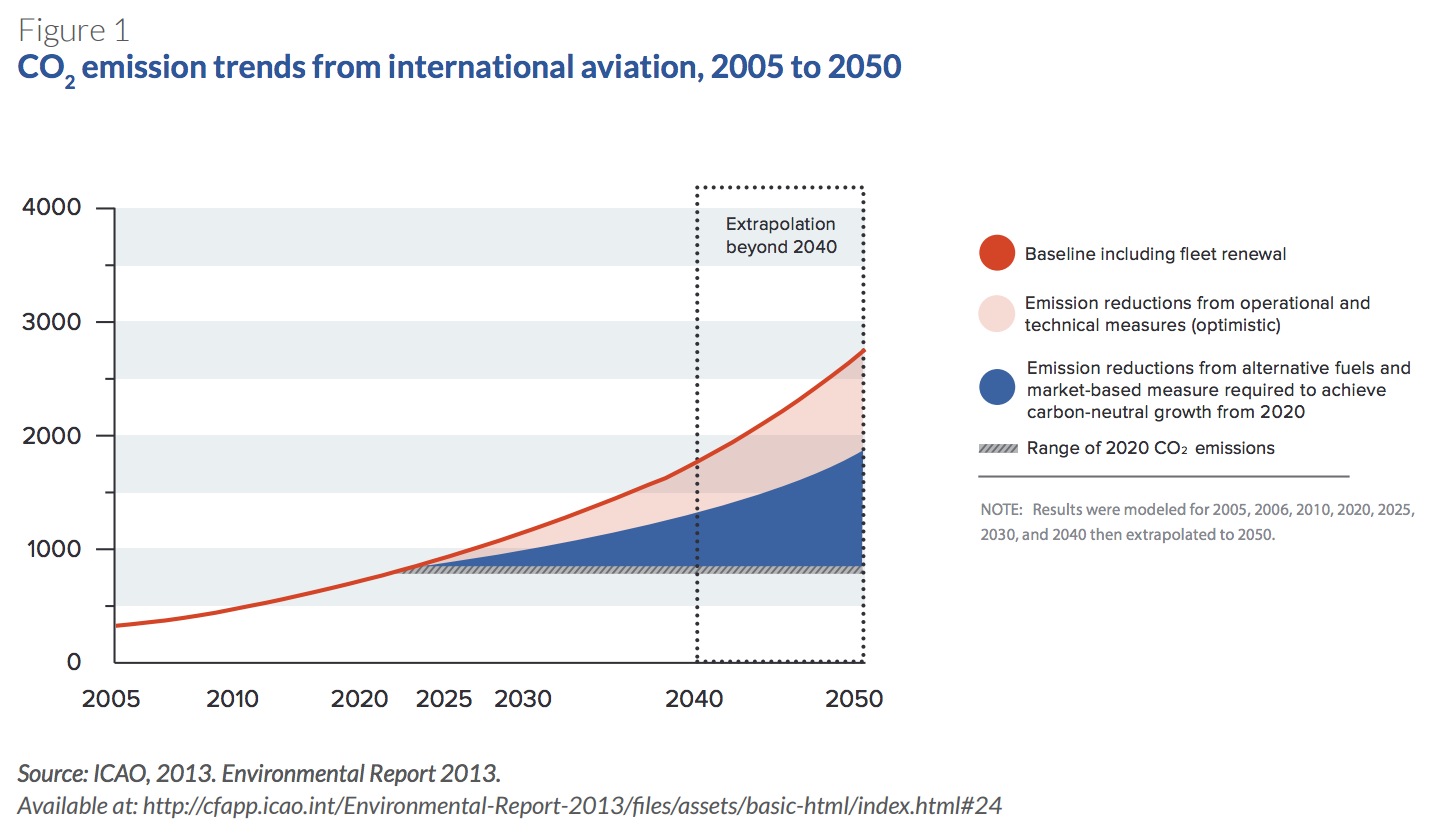GLOBAL COMMISSION ON THE ECONOMY AND CLIMATE
1. Introduction
The negotiations under the United Nations Framework Convention on Climate Change (UNFCCC) cover the vast majority of global greenhouse gas (GHG) emissions, but two significant sources of rapidly growing emissions need to be addressed primarily outside the UNFCCC: international aviation and international shipping. Due to their trans-boundary character, international cooperation is urgently needed to stem that growth and to seize opportunities for cost-effective emissions reduction.
Global aviation (domestic and international combined) produces around 2% of global CO2 emissions, and global shipping about 3%. But these proportions are growing quickly. By 2050, emissions from these sectors combined are projected to reach a level equivalent to between 10% and 32% of the total global emissions which would be consistent with a 2°C pathway. The majority come from international activity – 65% and 84% for aviation and shipping, respectively.
Without ambitious mitigation action in these areas, it will therefore be even more difficult to achieve the internationally agreed goal of keeping the average global temperature rise below 2°C. There are cost-effective options for reducing emissions from aviation and shipping available today, with significant scope to reduce fuel costs in particular, which represent around a third of operating costs in aviation and half in shipping. In aviation, these measures include new aircraft technology and harmonised air traffic management systems. In shipping, it is estimated that taking full advantage of efficiency measures that are already available could save over US$30 billion in fuel costs each year for the industry and avoid 300 Mt CO2 per year by 2030.
International cooperation is crucial to unlocking this potential. In aviation and maritime transport, the vast majority of activity takes place across national borders. A single airline or shipping company can operate across six continents, which means that internationally harmonised policies are fundamental to effective governance. Specialised UN agencies govern international activity in these two sectors: the International Civil Aviation Organization (ICAO) and the International Maritime Organization (IMO). Both are charged with overseeing their respective sectors, implementing international agreements and adopting industry-wide regulations to preserve a level playing field and ensure safety, security and good environmental performance.
Both organisations have begun discussions on a process of tracking and reducing their members’ emissions. The 191 ICAO Member States have set aspirational goals for international civil aviation: improving fuel efficiency by 2% annually and stabilising their net global CO2 emissions at 2020 levels. As part of meeting these goals, ICAO member states are due to decide in 2016 on the implementation of a market-based measure to control emissions from 2020. The IMO has established the Energy Efficiency Design Index (EEDI) and the Ship Energy Efficiency Management Plan (SEEMP). However, realising the cost-saving and climate protection potential of fuel efficiency improvements will require accelerated progress by these organisations and scaled-up ambition.
While the emissions reduction challenge is great, there are several recent developments in both aviation and shipping that can lay the groundwork for more ambitious climate action. Aircraft fuel efficiency continues to improve; several airlines have begun investing in sustainable fuels; and sophisticated technologies facilitate better air traffic coordination, allowing for more efficient routes and reductions in flight durations. In shipping, the private sector and NGOs have begun collaborating to understand and incentivise shipping efficiency; the EU has passed legislation to establish a transparent database on the efficiency of ships using its ports; and the Marshall Islands, the third-largest ship registry in the world, has pushed for international shipping to adopt an emissions target, though as yet without success.
Many of these initiatives are driven by collaboration among different industry stakeholders – and given the fierce global competition in these sectors, international cooperation will be essential for raising ambition. This paper examines the potential for further international cooperation in aviation and shipping to achieve both climate and economic benefits. We review the importance of the sector in the economy, the scale of emissions at stake, the options for reducing emissions, and the role of international cooperation. We conclude with recommended next steps for ICAO and the IMO, as well as for associated stakeholders in each sector.
About the Global Commission on the Economy and Climate
newclimateeconomy.net
The Global Commission on the Economy and Climate is a major international initiative to analyse and communicate the economic benefits and costs of acting on climate change. Chaired by former President of Mexico Felipe Calderón, the Commission comprises former heads of government and finance ministers and leaders in the fields of economics and business.
Tags: Air travel, Emissions, Global Commission on the Economy and Climate, Maritime, New Climate Economy







 RSS Feed
RSS Feed